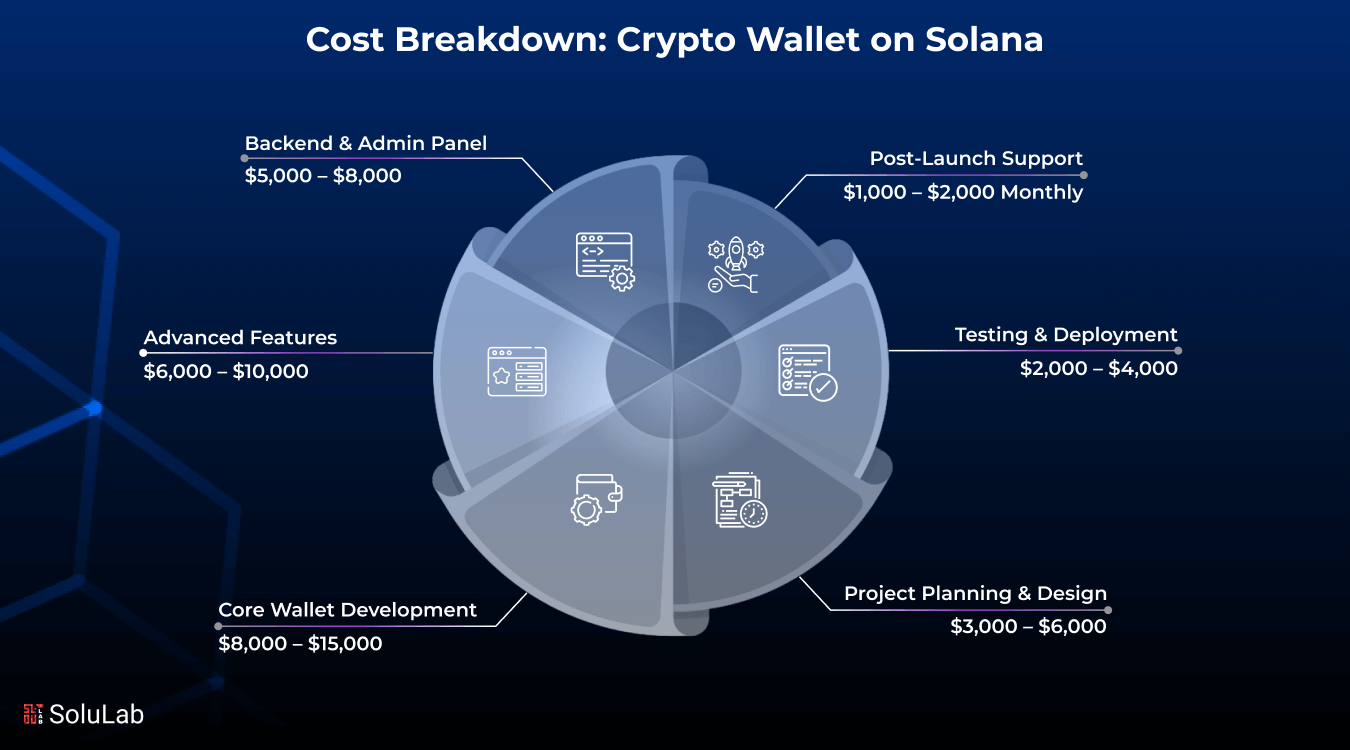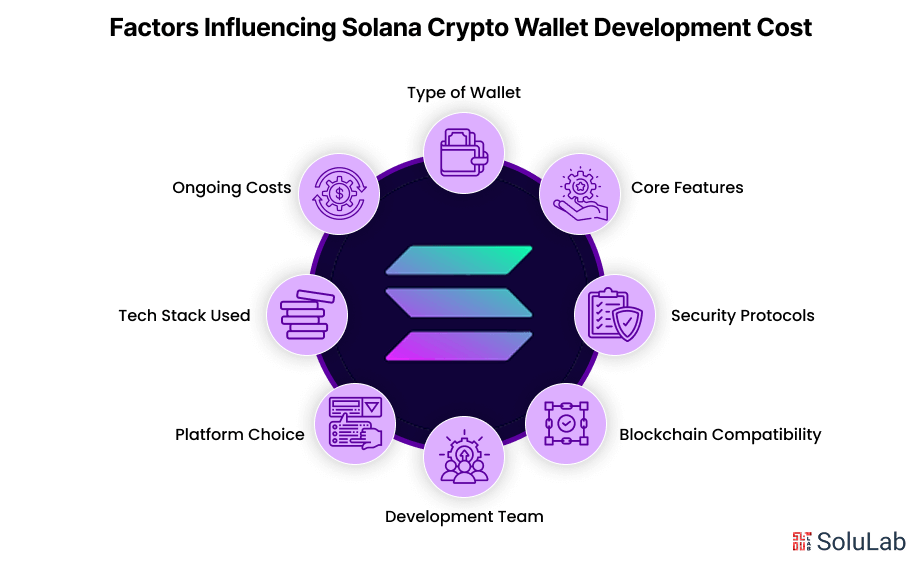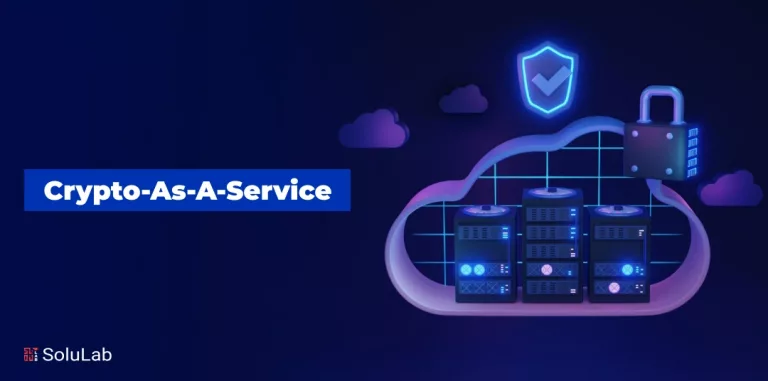
A crypto wallet on Solana is one of the fastest and scalable blockchains. Solana is a popular choice for developers and startups looking to launch secure, high-performance wallets. But before you start development, you should know how much it will cost.
It depends on several factors, including the type of wallet (custodial or non-custodial), the features you want to include, the complexity of the design, and your choice of tech stack and development team. Whether you’re planning a simple wallet for basic transactions or a feature-rich app that supports NFTs, staking, and cross-chain compatibility, your budget needs to align with your goals.
In this blog, we break down all the key cost components and help you understand what goes into building a crypto wallet on Solana from start to finish.
Crypto Wallet on Solana— A Quick Overview
A Solana crypto wallet allows you to store, send, and receive SPL tokens and SOL. It’s quick, affordable, and scalable. Solana wallets such as Solflare and Phantom wallet on Solana are user-friendly. You can link them to dApps, stake tokens, and even purchase NFTs. Installing is rapid. Just download, save your phrase, and you’re set.
| Solana’s market cap is projected to reach $250 billion by the end of 2025, driven by its high-speed transactions and increasing adoption in decentralized applications (dApps). |
The Solana network supports more than 65,000 transactions per second. That’s why it’s perfect for users who demand speed and minimal fees. Whatever your level, Solana wallets make it go smoothly and safely.
Unique Features of Crypto Wallets on Solana
Solana-based crypto wallets are making waves thanks to their speed, security, and user-friendly features. Let’s quickly break down what makes them stand out:
1. Transaction: The Solana wallets app offers lightning-fast transactions with minimal fees, making it perfect for users who don’t want to wait or overpay. Whether it’s sending tokens or interacting with decentralized applications (dApps), everything feels instant.
2. Security: Top-notch encryption, seed phrase protection, and biometric logins keep your assets safe. Plus, Solana’s secure blockchain adds an extra layer of trust to every transaction you make.
3. Multi-crypto Support: While Solana is the focus, most wallets now support multiple tokens like USDC, SRM, and even NFTs. This gives users flexibility to manage different digital assets all in one place.
4. Real-time Conversion Rates: You can track token values live within the wallet. This helps you make smart, timely decisions without switching apps or manually checking prices elsewhere.
5. Cross-platform Compatibility: Solana wallets usually work across Android, iOS, and even browser extensions. So whether you’re on mobile or desktop, your crypto is always within reach.
6. Push Notifications: Stay updated with real-time alerts for transactions, price changes, and app updates. It’s like having a mini crypto assistant in your pocket.
Factors Influencing Solana Crypto Wallet Development Cost
Developing a crypto wallet on the Solana blockchain involves various factors that influence the overall cost. Understanding these elements is crucial for budgeting and planning. Here’s a breakdown of the primary factors:

- Type of Wallet
The choice between custodial and non-custodial wallets significantly affects development costs. Custodial wallets, where a third party manages user keys, are generally simpler and less expensive to develop. In contrast, non-custodial wallets, which give users full control over their keys, require advanced security features, increasing complexity and cost.
- Core Features
The functionalities you wish to include—such as token swaps, NFT support, staking, and dApp integration—directly impact development time and expenses. Each added feature necessitates additional coding, testing, and potential third-party integrations, thereby elevating the overall cost.
- Security Protocols
Implementing robust security measures is non-negotiable in crypto wallet development. Features like two-factor authentication (2FA), biometric verification, and encryption protocols are essential to safeguard user assets. These security enhancements require specialized development efforts, contributing to higher costs.
Read Also: Why Every Business Should Integrate POS Crypto Wallets?
- Blockchain Compatibility
While focusing on Solana, ensuring compatibility with other blockchains can broaden your wallet’s utility, but also adds complexity. Cross-chain compatibility demands additional development resources to handle different protocols and standards, thus increasing the development budget.
- Development Team
The expertise and location of your development team play a pivotal role in cost determination. Hiring seasoned developers with proficiency in Rust and Solana’s architecture may command higher rates, but ensures quality and efficiency. Alternatively, outsourcing to regions with lower labor costs can be economical but may require more oversight.
- Platform Choice
Deciding whether to develop for iOS, Android, web, or multiple platforms influences the scope and cost. Each platform has its development nuances, and supporting multiple platforms necessitates additional resources for coding, testing, and maintenance.
- Tech Stack Used
The selection of technologies—such as programming languages, frameworks, and tools—affects both the development process and cost. For Solana wallet development, using Rust for Solana smart contracts and frameworks like React or Flutter for the frontend are common choices. The complexity and familiarity of these technologies with your team can influence development time and expenses.
- Ongoing Costs
Post-launch, wallets incur ongoing expenses including server hosting, regular updates, security audits, and customer support. For instance, maintaining a Solana validator node can cost between $2,000 to $5,000 per month, and annual maintenance may range from $2,000 to $10,000, depending on the application’s complexity.
How much does it cost to create a Crypto wallet on Solana?
Developing a crypto wallet on the Solana blockchain in 2025 involves various factors that influence the overall cost. The total expense can range from $15,000 to over $200,000, depending on the wallet’s complexity, features, and development approach. Here’s a breakdown of the cost estimates based on wallet complexity:
| Development Phase | Estimated Cost (USD) | Details |
| UI/UX Design | $500 – $1,500 | Designing intuitive and user-friendly interfaces. |
| Security Implementation | $600 – $2,500 | Integrating security protocols like multi-factor authentication and encryption. |
| Backend Development | $1,000 – $5,000 | Developing core functionalities and handling transactions. |
| API Integration | $500 – $1,500 | Implementing third-party services and payment gateways. |
| Quality Assurance & Testing | $400 – $1,000 | Conducting thorough testing to ensure functionality and security. |
Note: These costs can vary based on the complexity and specific requirements of the wallet.
Conclusion
Creating a crypto wallet on Solana can cost anywhere from $15,000 to over $200,000, depending on the wallet’s complexity, features, and security requirements.
Basic wallets are more affordable and quicker to build, while advanced versions with multi-chain support, DeFi integration, and top-notch security need higher investment and longer timelines.
Factors like the development team’s expertise, tech stack, and ongoing maintenance also play a major role in the final budget. Whether you’re a startup or an enterprise, it’s essential to define your goals clearly and work with an experienced team to ensure a secure, scalable, and user-friendly wallet solution.
SoluLab got a chance to work on Mobyii, a secure and powerful digital wallet app designed for cashless payments. With features like P2P encryption, biometric access, and utility bill payments, it ensures security and convenience. The app’s minimalistic design and wallet management system simplify depositing and withdrawing funds. Mobyii is a success, offering users an easy, secure, and rewarding payment experience.
SoluLab, a crypto wallet development company, can help you create a wallet on Solana. Get in touch with us today!
FAQs
1. What is a Solana-based crypto wallet?
A Solana crypto wallet is a digital wallet designed to store, send, and receive SOL and other Solana-based tokens. It also allows interaction with Solana dApps and supports staking or NFTs, making it a key factor when estimating overall crypto wallet development cost.
2. Can Solana wallets support multiple cryptocurrencies?
Yes, Solana wallets can be built with multi-token support, allowing users to manage both SOL and tokens from other blockchains via cross-chain integrations.
3. How long does it take to develop a crypto wallet on Solana?
Depending on features and complexity, development can take anywhere from 2 to 6+ months.
4. Do Solana wallets need KYC/AML integration?
Only if you’re offering custodial services or want regulatory compliance. Non-custodial wallets typically don’t require KYC.
5. Do I need ongoing maintenance after launch?
Absolutely. Updates, security patches, performance improvements, and user support are essential to keep the wallet reliable and secure.






